 I’ve learned a lot about grilling from my artist son-in-law Rodolfo Buonocore who is from Argentina, where grass-fed beef is king. I learned so much, I once wrote an entire story on the differences between grilling north and south of the equator for the L. A. Times. Back then, grass-fed meats were much harder to come by and were sometimes disappointing. You can’t just switch a grain-fed animal’s diet and expect miracles. Also, more “toned” meat requires different aging for tenderness.
I’ve learned a lot about grilling from my artist son-in-law Rodolfo Buonocore who is from Argentina, where grass-fed beef is king. I learned so much, I once wrote an entire story on the differences between grilling north and south of the equator for the L. A. Times. Back then, grass-fed meats were much harder to come by and were sometimes disappointing. You can’t just switch a grain-fed animal’s diet and expect miracles. Also, more “toned” meat requires different aging for tenderness.
Nowadays, it’s much easier to find quality pastured meats from small producers at local farmers’ markets and boutique butcher shops such as Lindy & Grundy in L.A. By small, I mean anything from Rocky Canyon Produce’s handful of cattle in Atascadero to the 600 Angus at Rancho San Julian in Santa Barbara.
Buying meat at farmers’ markets raises lots of questions: who should I buy from? Where is the meat “harvested” and processed? Has it been inspected? (If you’re interested, I cover all this in my farmers’ market tour.) But perhaps the biggest question is how to cook it. Have you noticed that your standard grilling techniques don’t work as well with meat from animals that grazed the land?
The most important—and most counter-intuitive—trick I learned from Rodolfo is to grill over medium, not high, heat and then brown the meat over high heat at the end of the cooking time. Even well-marbled grass-fed beef is leaner and firmer than its grain-fed counterpart, so the meat can toughen up more quickly during cooking. Grilling over medium heat gives you better control.
The other really important difference I learned is that in the US, our goal is to have everything ready in one frenzied moment, but in Argentina, it’s the guests who must be assembled and ready, so they can enjoy each piece of meat as it comes hot off the grill. With Father’s Day coming up soon, that puts Dad, aka the grill master or asador, center stage, right where he belongs.
- Create direct (hotter) and indirect (cooler) areas of heat in grill. Gas grills usually have multiple controls. Turn one section (preferably the middle area) to low or off, and put the food over the cooler area for indirect-heat grilling.
- For a kettle-type charcoal grill, mound most of the charcoal to one side, or make two equal piles, one on either side, and put the food over the cooler area for indirect-heat grilling. Wait until the coals are glowing and covered with white ash, 30 to 40 minutes after lighting (hardwood charcoal takes longer than briquettes) before you start cooking.
- For Santa Maria–type grills, most similar to Argentine grills, raise and lower the pulley-operated grates to control the distance of the food from the heat.
- Grill quick-cooking cuts such as steaks and burgers over direct medium heat. Brown at the end on high.
- Grill larger cuts such as tri-tips over indirect heat and move the meat to direct heat at the end to brown or crisp the surface.
- The surface of the meat should be as dry as possible for good browning. If possible, air-dry the beef for an hour (or at least 10 minutes) before cooking. 5 to 10 minutes before cooking, season the meat with a generous rub of kosher or other coarse-grained salt to further dry the surface, deepen flavors, and help develop a crust. You’ll be surprised at the tasty difference such a simple technique produces with grass-fed beef
- Test the meat for doneness by pressing the meat with your fingertip. If it is blood-rare, it will feel squashy; if medium-rare, it will be springier and have some give; and if it is medium-well, it will be pretty firm.
- Pull the meat off the heat before it reaches the feel you want. It will continue to cook from its own residual heat, as the heat from the hot exterior moves toward the cooler center.
- Let the meat stand 2 to 3 minutes before slicing to take care of the step above and to let the juices settle.
If you need some more grilling inspiration, see:
- Build-your-own Argentine tenderloin sandwiches (pictured at the top) and menu in my Summer Entertaining e-book.
- Plentiful simple tips and ideas on how to grill poultry, fish, and vegetables in The Santa Monica Farmers’ Market Cookbook and Summer Entertaining.
- Strawberry Shortcakes make a perfect dessert for a backyard barbeque or picnic. Find more tips for summer entertaining here.
- I don’t usually recommend any sugar-added savory products, but Chef’ Salt from salt guru Mark Bitterman and Andy Schloss and David Joachim uses a little turbinado sugar in their blends to get a lacquered crust. I like the NY Steak salt-and-pepper blend, especially on chicken.
Further reading on the subject:
- The Great Meat Cookbook: Everything you Need to Know to Buy and Cook Today’s Meat by Bruce Aidells tackles all the changes in meat sourcing since his authoritative Complete Meat Cookbook in 2001.
- Good Meat by Deborah Krasner
- Fire It Up: 400 Recipes for Grilling Everything by Andrew Schloss and David Joachim

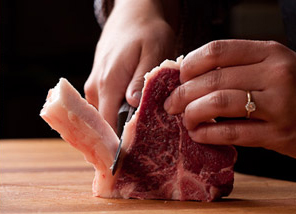
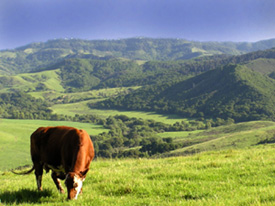
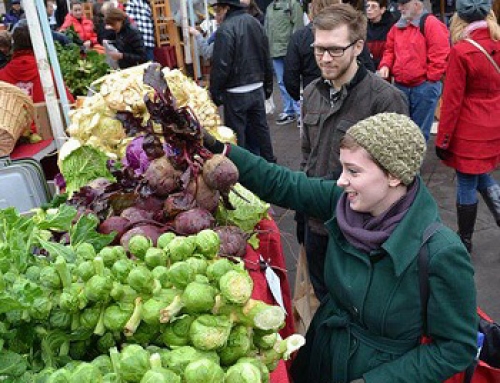
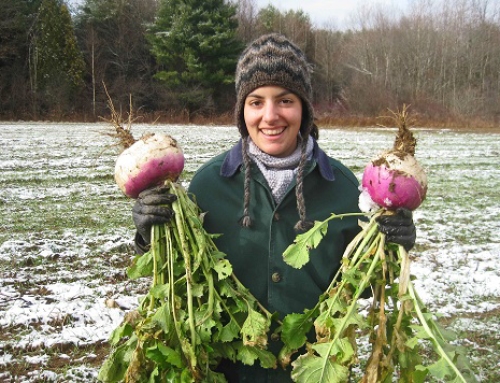
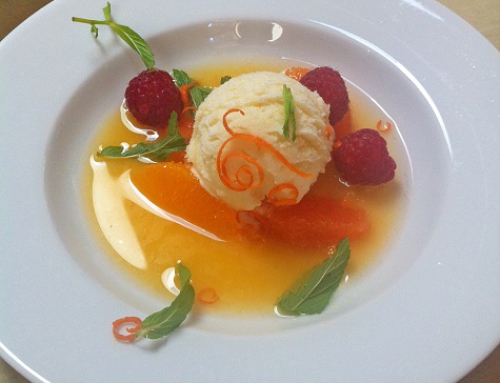

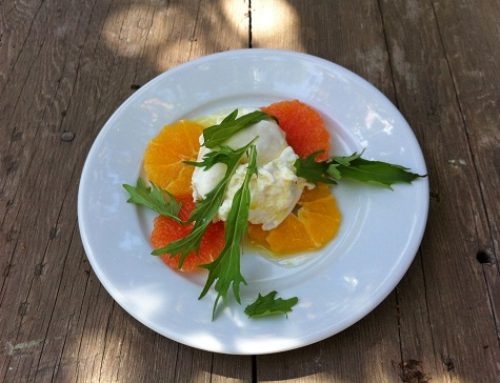
Thank you for your article. I have wondered why BBQing my
precious organic grass meats has not has been as rewarding as my Costco prime steaks. Medium -it is. Also, there is nothing like eating a great piece of beef in Argentina or Brazil.